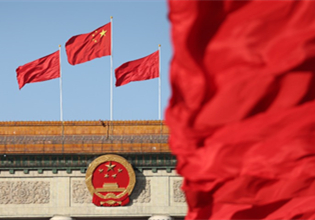Inner Mongolia completes 9m mu of desertification control
As of the end of May 2025, North China's Inner Mongolia autonomous region has completed 9 million mu (600,000 hectares) of desertification prevention and control, accounting for 45 percent of its annual target.
Stretching from west to east, Inner Mongolia is home to major deserts such as Badain Jaran, Tengger, Ulan Buh, and Kubuqi, as well as sandy lands including Mu Us, Hunshandake, Horqin, and Hulunbuir—making it a key battleground in China's fight against desertification.
In recent years, Inner Mongolia has stepped up efforts on three major campaigns for the Three-North Shelterbelt Forest Project, namely the Yellow River Bend campaign, the battle to reclaim the Horqin and Hunshandake sandy lands, and the effort to block desert encroachment along the Hexi Corridor–Taklimakan Desert fringe.
The region is working to halt the advance of sand into the Yellow River by building four major defense lines: ecological shelterbelts, windbreak greening zones, photovoltaic sand control belts, and sand-retaining silt dams.
Meanwhile, efforts to eliminate exposed sandy lands near Beijing continue, while edge-stabilizing forest and grass belts in the Badain Jaran and Tengger deserts have helped curb desert merging and slowed the southern advance of sand into the Hexi Corridor.



 Print
Print Mail
Mail





